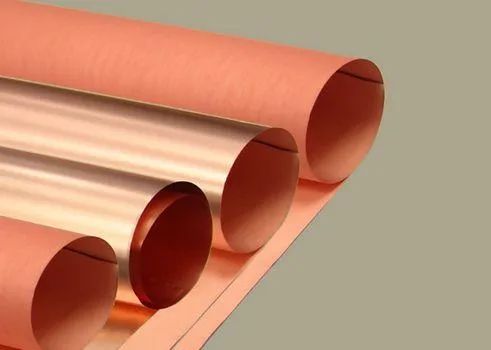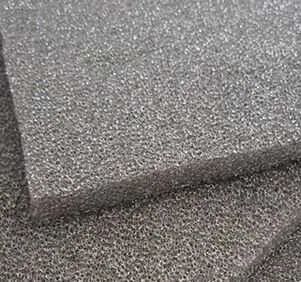The current collector is one of the indispensable components in the lithium-ion battery. It can not only carry the active material, but also collect and output the current generated by the electrode active material, which is beneficial to reduce the internal resistance of the lithium-ion battery and improve the battery’s performance. Coulombic efficiency, cycling stability and rate capability.
Lithium-ion battery current collector
In principle, an ideal lithium-ion battery current collector should satisfy the following conditions:
(1) High conductivity;
(2) Good chemical and electrochemical stability;
(3) High mechanical strength;
(4) Good compatibility and binding force with electrode active materials;
(5) Cheap and easy to obtain;
(6) Light weight.
However, in the actual application process, different current collector materials still have problems of one kind and another, so they cannot fully meet the above-mentioned multi-scale requirements. For example, copper is easily oxidized at higher potentials and is suitable for use as a negative electrode current collector; while aluminum is used as a negative electrode current collector, the corrosion problem is more serious, and it is suitable for use as a positive electrode current collector. Currently, materials that can be used as current collectors for lithium-ion batteries include metal conductor materials such as copper, aluminum, nickel, and stainless steel, semiconductor materials such as carbon, and composite materials.
2.1 Copper current collector
Copper is an excellent metal conductor with electrical conductivity second only to silver. It has many advantages such as abundant resources, cheap and easy availability, and good ductility. However, considering that copper is easily oxidized at higher potentials, it is often used as a current collector for negative electrode active materials such as graphite, silicon, tin, and cobalt-tin alloys. Common copper current collectors include copper foil, copper foam and copper mesh, and three-dimensional nano-copper array current collectors.
2.1.1 Copper foil current collector
According to the production process of copper foil, copper foil can be further divided into rolled copper foil and electrolytic copper foil. Compared with electrolytic copper foil, rolled copper foil has higher conductivity and better extension effect. Electrolytic copper foil can be selected as negative current collector for lithium-ion batteries that do not require high bending degree. Studies have shown that increasing the roughness of the surface of the copper foil is beneficial to improve the bonding strength between the current collector and the active material, and reduce the contact resistance between the active material and the current collector. Correspondingly, the rate discharge performance and cycle stability of the battery are also improved. it is good.
2.1.2 Foam copper current collector
Copper foam is a three-dimensional mesh material similar to sponge, which has many advantages such as light weight, high strength and toughness, and large specific surface area. Although silicon and tin anode active materials have high theoretical specific capacity and are considered to be one of the promising anode active materials for lithium-ion batteries, they also have large volume changes and pulverization during cyclic charge/discharge. and other shortcomings, which seriously affect the battery performance. Studies have shown that the foamed copper current collector can inhibit the volume change of silicon and tin anode active materials during charge and discharge, slow down their pulverization, and improve battery performance.
2.2 Aluminum current collector
Although the electrical conductivity of metal aluminum is lower than that of copper, the mass of aluminum wire is only half of that of copper wire when transporting the same amount of electricity. Undoubtedly, the use of aluminum current collector can help improve the energy density of lithium-ion batteries. Also, compared to copper, aluminum is cheaper. During the charging/discharging process of lithium-ion batteries, a dense oxide film is formed on the surface of aluminum foil current collectors, which improves the corrosion resistance of aluminum foils.
As with copper foil current collectors, surface treatment can also improve the surface properties of aluminum foil. After DC etching, the surface of the aluminum foil will form a honeycomb structure, which is more closely combined with the positive active material and improves the electrochemical performance of the lithium-ion battery. However, in fact, aluminum current collectors are often severely corroded due to the destruction of the surface passivation film, and the performance of lithium-ion batteries is also reduced. Therefore, in order to improve the corrosion resistance of the aluminum foil after etching, it is necessary to optimize the surface of the aluminum foil to form a more stable passivation film.
2.3 Nickel current collector
Relatively speaking, nickel is a base metal with relatively low price, good electrical conductivity, and is relatively stable in acid and alkaline solutions. Therefore, nickel can be used as both a positive electrode current collector and a negative electrode current collector. It is matched with lithium iron phosphate, a positive active material, and negative active materials such as nickel oxide, sulfur, and carbon-silicon composite materials.
The shapes of nickel current collectors are usually nickel foam and nickel foil. Due to the developed pores of the nickel foam, the contact area with the active material is large, thereby reducing the contact resistance between the active material and the current collector. However, when nickel foil is used as the electrode current collector, as the number of charge/discharge increases, the active material is easy to fall off, which affects the performance of the battery. Likewise, the surface pretreatment process is also applicable to nickel foil current collectors. For example, after etching the surface of the nickel foil current collector, the bonding strength between the active material and the current collector is significantly enhanced.
Nickel oxide has the advantages of stable structure, low price, and high theoretical specific capacity. It is a widely used negative electrode active material for lithium-ion batteries. Based on this, a layer of nickel oxide was grown in situ on the surface of nickel foam by solid-phase oxidation method to prepare a nickel oxide negative electrode with nickel foam as the current collector. Compared with the nickel foil/nickel oxide anode, the first discharge specific capacity of the foamed nickel/nickel oxide anode is greatly increased. The reason is that compared with the 2D current collector, the 3D structured current collector reduces the interface polarization phenomenon and improves the charge/discharge cycle stability of the battery.
LiFePO4 is considered to be an ideal positive active material for power lithium-ion batteries due to its advantages of good safety and wide range of raw materials. Coating it on the surface of the foamed nickel current collector can increase the contact area between LiFePO4 and nickel foam and reduce the interface. The current density of the reaction, thereby improving the rate discharge performance of LiFePO4.


